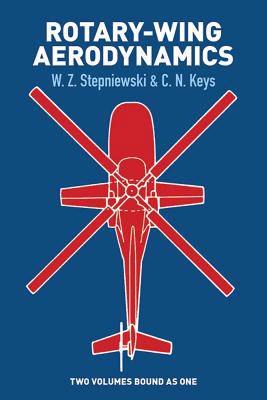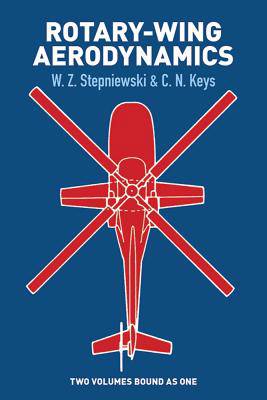
- Retrait gratuit dans votre magasin Club
- 7.000.000 titres dans notre catalogue
- Payer en toute sécurité
- Toujours un magasin près de chez vous
- Retrait gratuit dans votre magasin Club
- 7.000.0000 titres dans notre catalogue
- Payer en toute sécurité
- Toujours un magasin près de chez vous
Description
Recent literature related to rotary-wing aerodynamics has increased geometrically; yet, the field has long been without the benefit of a solid, practical basic text. To fill that void in technical data, NASA (National Aeronautics and Space Administration) commissioned the highly respected practicing engineers and authors W. Z. Stepniewski and C. N. Keys to write one. The result: Rotary-Wing Aerodynamics, a clear, concise introduction, highly recommended by U.S. Army experts, that provides students of helicopter and aeronautical engineering with an understanding of the aerodynamic phenomena of the rotor. In addition, it furnishes the tools for quantitative evaluation of both rotor performance and the helicopter as a whole. Now both volumes of the original have been reprinted together in this inexpensive Dover edition.
In Volume I: "Basic Theories of Rotor Aerodynamics," the concept of rotary-wing aircraft in general is defined, followed by comparison of the energy effectiveness of helicopters with that of other static-thrust generators in hover, as well as with various air and ground vehicles in forward translation. Volume II: "Performance Prediction of Helicopters" offers practical application of the rotary-wing aerodynamic theories discussed in Volume I, and contains complete and detailed performance calculations for conventional single-rotor, winged, and tandem-rotor helicopters.
Graduate students with some background in general aerodynamics, or those engaged in other fields of aeronautical or nonaeronautical engineering, will find this an essential and thoroughly practical reference text on basic rotor dynamics. While the material deals primarily with the conventional helicopter and its typical regimes of flight, Rotary-Wing Aerodynamics also provides a comprehensive insight into other fields of rotary-wing aircraft analysis as well.
In Volume I: "Basic Theories of Rotor Aerodynamics," the concept of rotary-wing aircraft in general is defined, followed by comparison of the energy effectiveness of helicopters with that of other static-thrust generators in hover, as well as with various air and ground vehicles in forward translation. Volume II: "Performance Prediction of Helicopters" offers practical application of the rotary-wing aerodynamic theories discussed in Volume I, and contains complete and detailed performance calculations for conventional single-rotor, winged, and tandem-rotor helicopters.
Graduate students with some background in general aerodynamics, or those engaged in other fields of aeronautical or nonaeronautical engineering, will find this an essential and thoroughly practical reference text on basic rotor dynamics. While the material deals primarily with the conventional helicopter and its typical regimes of flight, Rotary-Wing Aerodynamics also provides a comprehensive insight into other fields of rotary-wing aircraft analysis as well.
Spécifications
Parties prenantes
- Auteur(s) :
- Editeur:
Contenu
- Nombre de pages :
- 640
- Langue:
- Anglais
- Collection :
Caractéristiques
- EAN:
- 9780486646473
- Date de parution :
- 01-07-84
- Format:
- Livre broché
- Format numérique:
- Trade paperback (VS)
- Dimensions :
- 156 mm x 234 mm
- Poids :
- 861 g

Les avis
Nous publions uniquement les avis qui respectent les conditions requises. Consultez nos conditions pour les avis.






